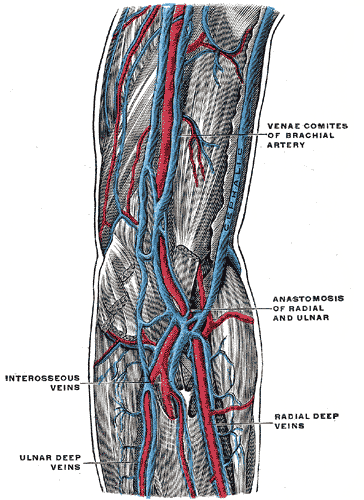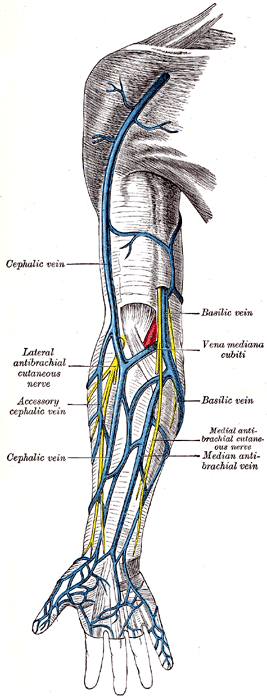Veins of the arm are either deep or superficial and are responsible for draining the hand and arm.
The major deep veins of the arm are the radial and ulnar veins, which run along the length of their respective bones and merge at the elbow to form the paired brachial vein. The brachial vein runs from the elbow up to the shoulder parallel to the brachial artery.

Deep veins of the upper extremity
The veins of the upper extremity are divided into two sets, superficial and deep. The deep veins are shown in blue.
The major superficial veins of the upper limb are the cephalic, median cubital and basilic veins. The cephalic vein arises from the dorsal venous network of the hand and passes the elbow anteriorly, continuing up the upper arm to the shoulder. The basilic vein follows a similar path but is located medially to the cephalic vein. At the elbow, the basilic and cephalic veins are linked by the median cubital vein, from which blood is often drawn.

Superficial veins of the upper extremity
The superficial veins of the upper extremity are shown in blue.
At the shoulder, the basilic vein passes deep into the arm and merges with the brachial veins to form the axillary vein, to which the cephaliac vein merges, forming the subclavian vein.